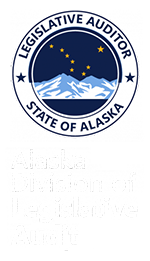Summary: The report recommends several ways that the State can maximize the amount of federal matching funds available. In some cases, the State may cut the amount of general funds needed to provide existing services to Alaskans by increasing the share that the federal government provides. In other cases the State could expand services by providing additional federal matching funds. However, this would require the State to expend additional general funds. The report also highlights other ways that the department can increase revenue, such as improving fee structures, implementing new fees, and looking for new ways to collaborate with tribal entities and other groups.
Click here for the table of all recommendations for maximizing revenue
Key Findings for Maximizing Revenue
- Federal Title IV-E funding can be claimed by states for eligible children in foster care who are in qualified foster care placements. In 2012, Alaska only had 38.5 percent of foster children qualify for funding compared to 51.6 percent nationally. (pg. 52)
- DHSS is not taking advantage of all opportunities for billing individuals and third party insurance to recover a portion of the costs of services currently supported by the general fund. (pg. 135)
Key Recommendations for Maximizing Revenue
- Separate foster care licensing statutes and regulations from other residential care facilities.
(Recommendation 3.2.I.2)
A separate foster care licensing statute will make it easier for foster care homes to become fully licensed and easier for relatives, in particular, to become licensed. This will make it easier to reach Title IV-E eligibility and bring federal matching funds to pay for foster services that the state currently pays for with general funds. The report estimates that if Alaska reaches the national average eligibility for Title IV funding, it would bring up to $4,653,600 in annual general fund savings.
- Conduct a comprehensive review of the fee structure for all licensing and certification functions.
(Recommendation 8.1.A.1)
DHSS licenses and certifies a number of facilities and individuals. In many cases, DHSS does not charge fees for these services. Where fees are charged, the amounts are so small that the revenue generated does not cover the department’s costs in issuing the license or certification. The department should establish fees equal to costs, accompanied by indexing to provide automatic adjustments of fees as costs change.
- Reestablish a fee system to help cover the State’s cost for laboratory testing.
(Recommendation 8.1.B.1)
(Recommendation 8.1.B.3)
The Alaska State Public Health Laboratories provide lab testing and analysis for a variety of public health concerns ranging from communicable diseases to toxic exposure. Each year, the health labs conduct approximately 181,000 tests with a commercial testing value of over $20 million. The State public health labs do not currently charge for the lab’s testing. The last attempt at implementing a fee system was discontinued due to a low collection rate. Low collection rates could be addressed by using an external billing vendor. Savings are estimated to be up to $2 million annually.
- Increase the billing capacity at DHSS.
(Recommendation 8.1.C.1)
(Recommendation 8.1.C.2)
(Recommendation 8.1.G.3)
DHSS is not taking advantage of all of the opportunities available for billing individuals and third party insurance to recover a portion of the costs of the services currently supported by the general fund. By expanding billing capacity for the public health clinics and Pioneer Homes, additional revenue would be generated to offset the costs of services funded through the general fund, with estimated savings of up to $281,666 annually. The department should explore whether the contract for third party billing in the Division of Health Care Services could be expanded to include billing for the Alaska Psychiatric Institute, Division of Public Health, and Pioneer Homes or centralize billing functions within DHSS to consistently and aggressively pursue payment from private sources.
- Require a denial letter from Medicaid before a resident may move into a Pioneer Home.
(Recommendation 8.1.G.2)
The Alaska Administrative Code states that a person applying for payment assistance for residency in the Pioneer Homes “shall” apply for Medicaid. Not enforcing this regulation means that the general fund could be supporting residents who are eligible for the Alaskans Living Independently Medicaid waiver. Savings are estimated to be up to $926,983 annually.
- Increase rates for Pioneer Homes to private market rates.
(Recommendation 8.1.G.4)
Fifty percent of the residents of Pioneer Homes are private pay. Pioneer Homes charge below market rates, meaning the State must pay a larger percentage of the cost to provide services from the general fund. Savings are estimated to be up to $3,448,260 annually.
- Increase revenue and reduce general fund expenditures by developing a fee schedule for Pioneer Homes.
(Recommendation 8.1.G.1)
Pioneer Homes do not charge application or waiting list fees, although it is common practice for assisted living facilities to require an application fee, deposits to be included on waiting lists, and community or entrance fees to move into a facility. Approximately half of applicants for residence in the Pioneer Homes are considered low income. Any fee could be waived for those individuals who do not meet set income levels. Potential savings is estimated at $60,750 annually.
- Establish a minimum license fee for smaller residential care facilities.
(Recommendation 8.1.A.3)
Alaska has an established license fee for residential care facilities of $25 per bed. This fee structure does not reflect the cost of licensing and monitoring the facilities. If, instead of $25 per bed, all facilities with fewer than 10 beds paid a minimum fee of $250, an additional $24,250 would be collected annually to help cover the State’s cost.
- Establish an application fee for all licensing services provided by DHSS.
(Recommendation 8.1.A.4)
According to a January 2013 analysis by the Office of Rate Review, an application fee of $1,000 for assisted living facilities would generate an additional $45,000 in annual revenue.

